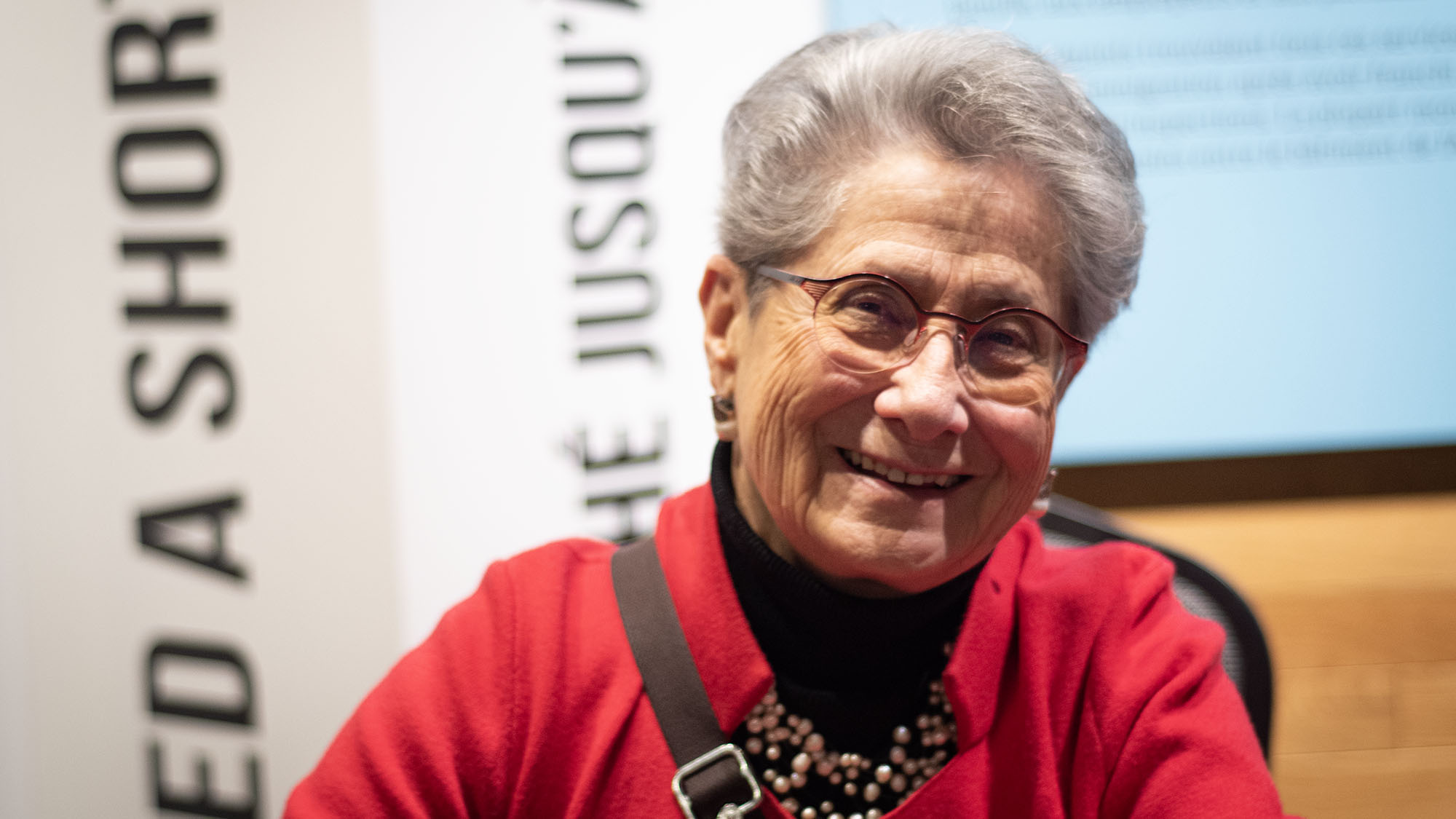Holocaust testimony provides ‘the humanity behind the numbers’
Child survivor escaped death camp when her mother passed her to her cousin

caption
Holocaust survivor Eva Kuper greets readers at her book signing on Monday night.Eva Kuper was two years old when Nazi soldiers rounded up her and her
mother for deportation to the Treblinka extermination camp in northeast
Poland.
Treblinka was the second-deadliest extermination camp operated by Nazi
Germany during the Holocaust. Kuper, now 84, is a child survivor.
Kuper was saved thanks to quick thinking from her adult cousin Regina
Bankier, who rescued her from the train before it left the station. Kuper, now
a mother and grandmother, says she can’t imagine what her mother felt
when she handed her off.
“It really wasn’t until my older years that I came to really understand and
honour the memory of what happened that day,” she said. “Both for my
mother and Regina, who both took unimaginable risks in doing what they
did.”
On Monday, Kuper spoke to a room of about 60 people about how
she survived the Holocaust. The event was held at the Canadian Museum of
Immigration at Pier 21 as part of Holocaust Education Week.
Since her retirement, Kuper has dedicated her life to Holocaust education.
She’s been volunteering at the Montreal Holocaust Museum since 2005 and
became a board member in 2013.
Kuper teaches Holocaust education to help younger generations understand
the history and “have them think about all the things that connect us as
human beings.”
Her story is published in Before All Memory is Lost: Women’s Voices from
the Holocaust. Kuper held a book signing after her talk. The books were
donated by the Azrieli Foundation.
A narrow escape
Kuper was born in Poland in 1940 to Jewish parents, Fela and Anthony. In
October 1940, her family was forced to move into the Warsaw ghetto.
In September 1942, her father was at work when Nazi soldiers took Kuper
and her mother. When he got home from work and found the house empty, he called Bankier, who rushed to the loading platform where prisoners were brought for deportation. She saw Kuper and her mom crowding into a cattle car.
She cried out that Kuper was her child and that Fela was only babysitting.
Fela was allowed to pass Kuper hand-to-hand until she was thrown from the
car into Bankier’s arms.
Once the doors slammed and the cattle cars left the station, Fela was never
seen again. Kuper says she was killed within one hour of arriving at Treblinka.
Shortly after her rescue, Kuper and her father escaped the Warsaw ghetto
through the sewers.
Her father sent her to live with Hanka Rembowska, a children’s book illustrator. When Rembowska fell ill with tuberculosis, Kuper was put in the care of a group of Franciscan nuns, where she spent the rest of the war in hiding.
Kuper credits her caretaker, Sister Klara Jaroszyńska, for saving her life.
Pier 21 has been partnering with the Atlantic Jewish Council and the Azrieli
Foundation for Holocaust Education Week for over a decade.
Holocaust education
Rebecca MacKenzie-Hopkins, the public programs and community
engagement manager at Pier 21, says Holocaust Education Week is “about
showing people the humanity behind the numbers.”
“When you hear six million,” she says, “it’s such an astronomical number that
you can’t really fathom how many people that is.”
MacKenzie-Hopkins says survivor testimonials are the most effective ways to
connect people to the horrors of the Holocaust, especially students.
On Tuesday morning, the museum held a second talk with Kuper for Halifax
schools. More than 400 students were in attendance. The event was also
live-streamed to YouTube, where over 1,000 students were scheduled to tune
in.
After liberation, Kuper reunited with her father and attended Catholic school
in Poland before immigrating to Montreal in 1948. She knew nothing of her
Jewish identity until her father told her on the boat to Canada. Kuper says
she was disturbed to learn about her Jewish heritage. In school, she learned
anti-Semitism; her teacher taught her that Jews were “evil.”
It took Kuper years to be proud of her Jewish heritage. Now, she encourages
others to be proud of where they come from.
“I think that there’s only one comfortable place,” she said. “And that is being
who you are.”

